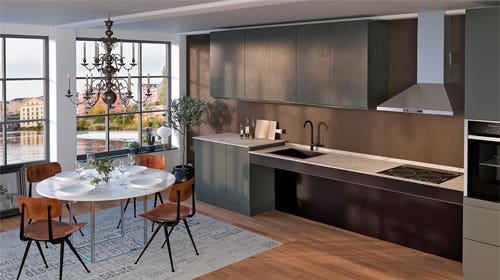Gradual upward trend emerging in new construction
The value of new construction starts climbed 12 percent in October to a seasonally adjusted annual rate of $447.6 billion, according to McGraw-Hill Construction, a division of The McGraw-Hill Companies….
The value of new construction starts climbed 12 percent in October to a seasonally adjusted annual rate of $447.6 billion, according to McGraw-Hill Construction, a division of The McGraw-Hill Companies.
{loadposition position10}
The upward push came from double-digit gains for nonresidential building and nonbuilding construction (public works and electric utilities). At the same time, residential building in October was unchanged from its September pace. Through the first 10 months of 2009, total construction on an unadjusted basis came in at $350.1 billion, down 29 percent from the same period a year ago.
The October statistics lifted the Dodge Index to 95, up from 84 in September, and the highest level so far in 2009. The Dodge Index had fallen to 80 in February 2009 and since then has registered improvement, although the October reading was still 19 percent below the full-year 2008 average for the index at 117.
"After bottoming out in early 2009, there's been an up-and-down pattern for construction starts, with a gradual upward trend beginning to emerge," says Robert A. Murray, vice president of economic affairs for McGraw-Hill Construction. "Single family housing is no longer pulling down the overall level of construction activity and transportation-related public works has strengthened, helped by the federal stimulus funding.
"For nonresidential building, much of 2009 has been characterized by a steep loss of momentum, so October's gain represents a departure from recent experience. It suggests that nonresidential building is beginning to make the transition from steady decline to a more varied pattern, which signifies the trend is shifting to a slower rate of descent going into 2010. On a cautionary note, the nonresidential building market is still looking at several major constraints going forward - rising vacancies, tight bank lending standards and the weakened fiscal health of state and local governments."
Residential building, at $127.8 billion (annual rate) in October, was essentially unchanged from the prior month. Single-family housing slipped back 2 percent, marking the first decline after six straight months of gains.
By region, single-family housing showed diminished activity in the South Atlantic (down 7 percent), the Northeast (down 2 percent), and the South Central (down 1 percent), while the Midwest and West were unchanged.
October's pace for single-family housing, while 49 percent above the extremely depressed amount reported at the start of 2009, was still 11 percent below the monthly average for full-year 2008.
Multifamily housing in October advanced 20 percent from a very weak September.
For information, visit www.dodge.construction.com/analytics.







